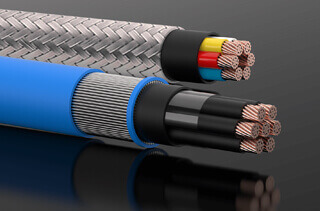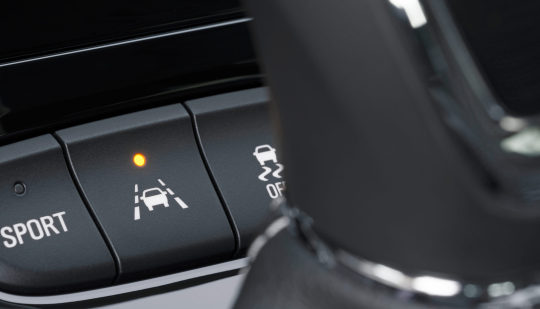#sensor solution
Text
Octiot integrated sensor lightning solution is thriving in smart product industry due to its capability of Human body detection, energy saving component, over current protection and strong backup features.
0 notes
Text
DC X DP PROMPT #20
Danny has been captured by parents who thought that they could 'fix' him. They thought he was possessed.
Their fix? Capping all emotions. It wasn't a lobotomy per se, but it was quite close to it. The Fenton's know this isn't a long-term fix, they are looking for something more permanent. Which is what led them to a Wayne Charity Gala in the first place. The Drs. Fenton are seeking funds to make a mirical cure for their obviously sick son. No, they can't tell you more about it (not here at least). If you want to find out more you can donate and come to their next seminar.
Danny is sickly and devoid of all emotions, this sets off some red flags for the bats, regardless of what the boys parents are saying.
#dc x dp#dpxdc#reveal gone... medium???#its not good but hes not dead!! or cut open!!!#dannys parents love him so much but they are so biased against ghosts#they are looking for ways to unghost their child#their current solution is to make danny wear a spector deflector and inhibit his emotions#since ghosts are made of those#and now he no longer shows up on their sensors#so problem temporarily solved!!!#right?#:)
349 notes
·
View notes
Text
#decorative lighting New Delhi#lighting solution New Delhi#decorative led lights for home New Delhi#fancy lights for home decoration New Delhi#fairy lights New Delhi#led christmas lights New Delhi#led string lights New Delhi#fairy lights bedroom New Delhi#battery fairy lights New Delhi#diwali light decoration New Delhi#festival lights New Delhi#motion sensor outdoor light New Delhi
2 notes
·
View notes
Text
Integrating Temperature Sensors with Industrial Control Systems
Integration of industrial temperature sensors with industrial monitoring solutions is essential for process optimization, safety, and efficiency improvement in current industrial settings.
0 notes
Text

Celebrating Rabindra Nath Tagore's Legacy on His Jayanti from OCTIOT
.
.
.
.
rabindranathtagore #rabindrasangeet #kolkata #rabindrajayanti #bengali #kolkatadiaries #india #rabindranath #love #esysense #occupancy #sensor #manufacturer #octiot
#sensor-enabled solutions#optimize energy consumption#lighting#passive infrared sensor#energy-efficient lighting#occupancy sensor#sustainable lighting practices#green energy products#octiot#rabindranath tagore#rabindrasangeet#rabindranath thakur#2024#new post
0 notes
Text
#IoT Sensors Market#Smart IoT Sensors#IIot Sensors#Wireless IoT Sensors#IoT Enabled-Sensors#IoT Sensor Solutions#IoT Sensors and Devices#Industrial IoT Sensors
0 notes
Text
Environmentally Friendly Parking-Sustainable Practices Modern Parking Management Systems Use

In the pursuit of sustainability, every business is looking for ways to lessen its environmental impact, and parking management systems are no different. Parking lots, which were previously disregarded in terms of environmentally friendly practices, are increasingly becoming focus points for innovation aimed at making them greener.
Read More : https://www.sotefinparking.com/eco-friendly-parking-sustainable-practices-modern-parking-management-system-uses/
0 notes
Text
Discover India's Leading Cable Manufacturers | Top Quality Cables at Tempsens
Explore the excellence of top cable manufacturers in India at Tempsens Instruments. Elevate your connectivity with precision-engineered cables, ensuring reliability and performance. Uncover a world of trusted quality for your diverse needs.

#tempsens#cable manufacturer in india#tempsens instruments#wires and cables manufacturers in india#temperature sensor manufacturers in india#thermal solutions#tempsens india#thermocouple india
0 notes
Text
Global Disposable Medical Sensors Market Insights : Revolutionizing Healthcare
The global disposable medical sensors market was valued at USD 9.52 billion in 2022 and is projected to grow at a CAGR of 18.45% from 2023 to 2030. This growth can be attributed to technological advancements, increasing demand for health data tracking, and the need for low-cost medical devices. The rising prevalence of chronic diseases worldwide is expected to drive the demand for disposable medical sensors. According to a report by Front. Public Health in 2020, chronic non-communicable diseases (NCDs) accounted for approximately 80% of mortality among Chinese adults aged 60, with Ischemic heart disease, stroke, Chronic Obstructive Pulmonary Disease (COPD), and Type 2 diabetes being the most common conditions. The growing adoption of disposable medical sensors in healthcare settings is likely to contribute to the market's expansion in the coming years.
Click here for full report:
https://www.pharmanucleus.com/reports/disposable-medical-sensors
Market Insights:
In the global disposable medical sensors market, the diagnostic segment led the market in 2022, accounting for over 39.38% of the global revenue. Disposable medical sensors are widely used in diagnostic devices such as surgical tools, endoscopy equipment, spirometry devices, and medical imaging devices, enhancing their capabilities and enabling early disease detection. Advanced sensors, such as carbon nanotube-based biosensors, are being used to detect microorganisms like S. aureus and E. coli, providing faster and more accurate results at a lower cost. The integration of wireless communication and biosensors is creating growth opportunities in the diagnostic field.
The increasing prevalence of chronic diseases and the demand for diagnostics are driving the adoption of disposable medical sensors. Diagnostic devices are crucial for monitoring symptoms and signs of chronic diseases like diabetes. Companies are developing innovative solutions to improve diagnostic capabilities, such as portable genetic material amplification systems for point-of-care molecular diagnostic detection. The patient monitoring segment is expected to have the highest compound annual growth rate (CAGR) during the forecast period. Medical sensors are utilized in patient monitoring devices like pulse oximeters and blood pressure monitors. Advancements in technology and product launches, such as next-generation monitoring biosensors by Philips, contribute to improved quality of care.
The demand for disposable medical sensors is projected to increase due to their various advantages, leading to a rise in R&D investments and collaborations between companies. For example, Rockley Photonics Holdings Limited and Medtronic are collaborating to implement Medtronic's solutions with Rockley's Bioptx biomarker sensing technology in healthcare settings. This collaboration aims to provide real-time, non-invasive monitoring of individuals' well-being and health, enabling proactive healthcare and personalized care based on actionable data. Such initiatives are expected to drive the growth of the patient monitoring segment in the near future.
Click here for full report:
https://www.pharmanucleus.com/reports/disposable-medical-sensors
Product Insights:
In 2022, the biosensors segment held the largest market share, accounting for over 49.70% of the market. Biosensors are sensors designed to detect analytes by collecting biological components and utilizing a physiochemical detector. The signals from the analyte are detected, measured, and displayed on the device through associated electronics. Various types of biosensors are used, including electronic, amperometric, blood glucose, potentiometric, conduct metric, thermometric, optical, fiber optic lactate, immune, and piezoelectric biosensors. Biosensors have applications in patient monitoring and diagnostics, and the increasing demand for rapid and accurate diagnostic kits is driving the growth of biosensors. Innovations in biosensor technology are expected to lead to the development of advanced biosensors for faster diagnosis in the future.
The image sensors segment is projected to have the highest compound annual growth rate (CAGR) during the forecast period. Image sensors convert light waves into signals to create images and find extensive use in diagnostic devices such as endoscopy equipment and electronic imaging devices. There are two types of image sensors: charge-coupled devices (CCD) and complementary metal oxide semiconductors (CMOS). CMOS image sensors are more commonly used due to their lower power consumption and faster diagnostic speed. They are primarily utilized in x-ray imaging, minimally invasive surgery, endoscopy, and ocular surgery. Technological advancements and the demand for higher resolution are expected to drive market growth in the image sensors segment.
Click here for Free sample request:
https://www.pharmanucleus.com/request-sample/1180
Market Segmentation:
The strip sensors segment held the largest market share in 2022, accounting for over 38.76% of the market. Strip sensors are primarily used in blood glucose monitoring, disease testing, and magnetic nanoparticles. Their dominance in the market is attributed to increasing demand and their widespread usage in diagnostic applications. Strip sensors offer the advantage of faster results, which contributes to their popularity. Furthermore, the market is driven by the growing demand for self-diagnosis and home-based medical devices.
The ingestible sensors segment is projected to have the highest compound annual growth rate (CAGR) during the forecast period. Ingestible sensors are small chips enclosed in capsules that are swallowed, allowing for detection of any abnormalities in the body and transmission of the data to an external device. These sensors find applications in endoscopy, controlled drug delivery, and patient monitoring. The rising prevalence of chronic diseases and the need for invasive diagnostic testing are driving the growth of ingestible sensors. Additionally, the accuracy of results obtained through ingestible sensors further fuels their demand in the market.
Due to the various advantages of ingestible sensors, the demand for these devices is anticipated to increase during the forecast period. Increasing R&D investments and collaborations between companies are also expected to propel market growth. In July 2021, according to Medtronic plc, the FDA cleared the use of two LINQ II insertable cardiac monitors with the AI AccuRhythm algorithms. When the AI AccuRhythm algorithms are made accessible on the CareLink Network later this year, all LINQ II implants in the U.S will be able to use them.
Regional Analysis:
North America dominated the global disposable medical sensors market in 2022, holding the largest revenue share of over 41.18%. This can be attributed to several factors, including the region's well-established healthcare infrastructure, high healthcare spending, the presence of monopolistic market players, and the rapid adoption of cutting-edge technologies. The market in North America is highly developed and is expected to be driven by the increasing uptake of patient monitoring and homecare devices for routine, ongoing, and long-term patient monitoring, which helps reduce the frequency of hospital visits.
Favorable reimbursement policies are expected to further fuel market expansion in North America. Additionally, the rising prevalence of lifestyle-related health issues, accidents, and sports injuries contribute to the growth potential in the region. The increasing use of mobile surgery centers and the demand for effective emergency care are also anticipated to boost the market during the forecast period. Moreover, the COVID-19 pandemic has highlighted the importance of disposable medical sensors in enabling remote patient monitoring and care at home, leading to increased adoption of these devices.
The Asia-Pacific region is projected to experience the fastest growth in the global disposable medical sensors market during the forecast period. The region witnesses a significant demand for disposable medical sensor equipment due to the increasing prevalence of cardiac disorders, particularly in countries like China and India, which also have high diabetes rates. The rising burden of diabetes in the region is driving the demand for home-based disposable medical sensors, creating new market opportunities. Additionally, the presence of major companies in the disposable medical sensors market further contributes to the region's market share and growth potential.
#Disposable Medical Sensors Market#Healthcare Technology#Sensor Innovations#Global Market Trends#Medical Device Industry#Sensor Solutions#Market Insights
0 notes
Text

"Experience seamless connectivity and efficiency with our comprehensive IoT solutions. Our tailored offerings empower businesses to harness the power of interconnected devices, enabling real-time data collection, analysis, and informed decision-making. Explore our range of IoT solutions designed to streamline operations, drive innovation, and elevate your business to new heights in the digital landscape." <a href="https://helixsense.com/iot-solutions/">IoT"Solutions </a>
0 notes
Text
Transforming Fleet Efficiency: Innovations in Fuel Management and Advanced Transportation Solutions
In the realm of logistics and transportation, the optimization of fleets plays a pivotal role in ensuring operational efficiency and cost-effectiveness. Central to this optimization are innovative technologies such as fuel management systems, fuel monitoring sensors, logistics management software, transportation management solutions, and driver behavior monitoring systems. These integrated solutions have emerged as game-changers in the industry, offering a comprehensive approach towards enhancing fleet performance and reducing operational overheads.
Fuel Management Systems for Fleet Efficiency
Fuel is a significant cost factor in fleet operations. As such, precise management of fuel consumption becomes paramount. Fuel management systems for fleet provide a holistic approach to monitor, track, and manage fuel usage across the fleet. These systems incorporate sophisticated software and hardware components that enable real-time monitoring of fuel levels, identification of inefficiencies, and detection of potential anomalies such as fuel theft or excessive consumption.
By leveraging advanced analytics and reporting tools, fleet managers can gain actionable insights into fuel usage patterns, allowing for informed decision-making. Optimization of routes, maintenance scheduling, and vehicle performance analysis are among the many benefits offered by these systems, ultimately leading to reduced fuel costs and increased operational efficiency.
Fuel Monitoring Sensors: Real-time Insights into Consumption
Complementing fuel management systems, fuel monitoring sensors are instrumental in providing real-time data on fuel levels, consumption rates, and even fuel quality. These sensors, often integrated with vehicles’ fuel tanks, continuously transmit data to centralized systems. This data aids in proactive decision-making, enabling prompt responses to fluctuations in fuel levels and identifying potential issues such as fuel leakages or irregular consumption patterns.
The ability to access precise and timely information empowers fleet managers to optimize refueling schedules, prevent fuel theft, and ensure compliance with environmental regulations by monitoring emissions. Ultimately, this proactive approach enhances overall fleet productivity and reduces unnecessary fuel expenses.
Logistics Management Software: Streamlining Operations
In today’s complex logistics landscape, the role of logistics management software cannot be overstated. These comprehensive platforms offer end-to-end solutions for managing various aspects of transportation and supply chain operations. From order processing and inventory management to route optimization and shipment tracking, logistics management software centralizes and automates critical processes.
Integration with fuel management systems allows for seamless data exchange, facilitating more accurate cost calculations and improved resource allocation. Real-time visibility into inventory levels, delivery schedules, and vehicle availability empowers logistics teams to make informed decisions promptly, thereby enhancing operational efficiency and customer satisfaction.
Transportation Management Solutions: Optimizing Workflow
Transportation management solutions encompass a broader spectrum of tools and technologies designed to streamline and optimize the movement of goods and resources. These solutions leverage advanced algorithms and data analytics to optimize route planning, load balancing, and carrier selection.
Integration with fuel management systems and logistics management software creates a unified ecosystem, enabling a synchronized approach to fleet operations. From reducing empty miles to improving delivery timelines, these solutions play a crucial role in enhancing cost-effectiveness and operational agility.
Driver Behavior Monitoring Systems: Enhancing Safety and Efficiency
Drivers are the linchpin of fleet operations. Driver behavior monitoring systems utilize telematics and IoT devices to track and analyze driver performance metrics such as speed, braking habits, and idling time. By providing insights into driver behavior, these systems facilitate the implementation of training programs and incentive structures to improve safety and fuel efficiency.
Moreover, the integration of driver behavior data with other systems offers a comprehensive view of fleet operations. Identifying and addressing inefficient driving habits not only reduces fuel consumption but also enhances overall fleet safety and compliance.
In conclusion, the integration of fuel management systems, fuel monitoring sensors, logistics and transportation management software, and driver behavior monitoring systems represents a transformative approach in optimizing fleet operations. The synergy among these technologies empowers organizations to achieve higher levels of efficiency, cost savings, and sustainability in today’s dynamic transportation landscape. As technology continues to evolve, embracing these innovations becomes imperative for businesses seeking to stay ahead in the competitive realm of logistics and transportation.
#fuel management system for fleet#fuel monitoring sensor#logistics management software#transportation management solutions#driver behaviour monitoring system
0 notes
Text
[SOLVED] Why Does Lane Departure Warning Light Stays On?
Welcome to the world of cars and questions, where that lane departure warning light is causing a bit of a head-scratcher.
You’ve likely noticed it sticking around on your dashboard longer than you’d prefer, and you’re not alone in wondering why.
In this article, we’re going to cut through the confusion and get straight to the point without any unnecessary jargon.
So, why does that lane…

View On WordPress
#automotive safety#Automotive troubleshooting#Driver Assistance Systems#Lane Departure Warning#Lane Departure Warning Light Stays On#Lane Keeping#Persistent Warning Light#Road Safety Features#Sensor Malfunctions#vehicle dashboard#Warning Light Solutions
1 note
·
View note
Text
Upgrade your home with the innovative OCTIOT Motion Sensor LED Light. This state-of-the-art sensor light is not only energy-efficient but also provides convenience and safety. With its motion sensor technology, the light automatically turns on when it detects movement, eliminating the need to fumble for switches in the dark. The LED bulbs ensure bright and long-lasting illumination, saving you money on energy bills and replacement bulbs. Whether you want to install it in your hallway, bathroom, or garage, the OCTIOT Motion Sensor LED Light is a perfect addition to any space. Experience the benefits of this advanced technology today.
#octiot#sensor-enabled solutions#energy-efficient lighting#optimize energy consumption#co2 emission reduction#occupancy sensor#passive infrared sensor#sustainable lighting practices#lighting#green energy products#LED#LED lights#Motion sensor LED light#Motion sensor LED#LED sensors#Sensors LED Light#Sensor Light
0 notes